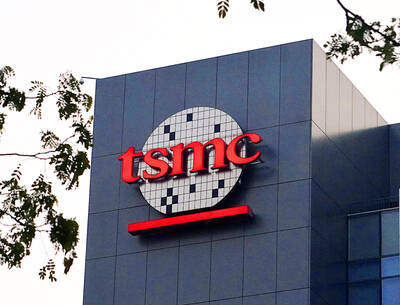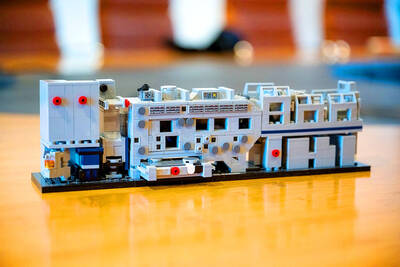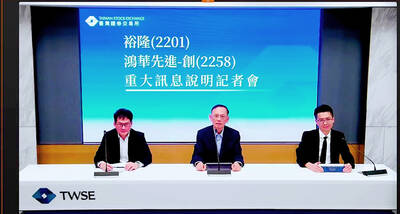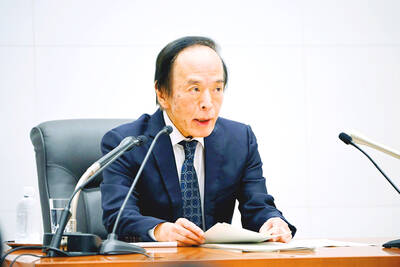More than 80 years after Mickey Mouse piloted Steamboat Willie and whistled his way into the hearts of children across the world, he has finally reached the shores of Hawaii.
Walt Disney Co on Friday gave a peek of its sprawling, beachside Hawaiian resort that is under construction and scheduled to open next year.
“Aulani” is Disney’s first major stand-alone resort away from a theme park and could serve as a model for future projects as the company diversifies and expands its vacation offerings.
“This is a very special project for us,” said Tom Staggs, chairman of Walt Disney Parks and Resorts. “It’s unlike anything that Disney has done before; at the same time, it’s very like many of the things we do.”
Aulani will have 359 hotel rooms, 481 time-share units, restaurants, convention center, a 1,394m² spa and massive water play area that includes a volcano tube slide and snorkel lagoon.
It sits on 8.5 hectares on Oahu’s Leeward Coast in the Ko Olina development, known for its white-sand lagoons, scenic golf course and colorful sunsets. Ko Olina is about an hour west of Waikiki, where most of the hotels and tourists are.
Jim Lewis, president of Disney’s time-share component, said Hawaii makes “perfect sense” with its rich culture, traditions, warm greetings, family values, friendships and story-telling.
“Those are also terms synonymous with Disney,” he said. “And by the way, Hawaii also happens to be one of the most popular vacation destinations on the planet, and that’s the business that we’re in.”
Most of the resort is currently a jungle of concrete, steel, wires and pipes with no Mickey and Minnie in sight. Aulani is scheduled to open on Aug. 29 next year, with hotel reservations to begin next month. Time-share sales started three weeks ago.
With the construction phase alone costing more than US$600 million, Aulani represents a huge investment for Disney amid a sharp tourism downturn.
Staggs, who previously served as Disney’s chief financial officer, wouldn’t comment on the final cost.
“Are we nervous about this investment right now given this economy? The answer is we really aren’t,” he said. “We really do have a fundamental belief in this location and Hawaii in general.”
Staggs called the project “a tremendous opportunity,” giving Disney a permanent presence in the islands.
He wouldn’t say what other areas Disney was considering because “right now, our focus is right here and making sure we get this right.”
According to an economic impact study commissioned by Disney, Aulani is expected to generate 4,800 jobs during construction. When completed, 2,400 jobs will be created, with about half working at the resort. More than US$271 million annually in economic activity will be generated.
The largest units at Aulani are three-bedroom “Grand Villas” — 214m² timeshare units that are larger than most Hawaii homes, sleep 12 and have sweeping views of the Pacific.
All the hotel and timeshare units have more of a traditional Hawaiian flair with touches of Disney that generally are subtle — other than the surfer Mickey lamp in each room.
While this may be Disney’s first big push into Hawaii, the company has had a long and growing relationship with Hawaii. One of the most notable is the animated film Lilo & Stitch, the centerpiece of a US$1.7 million marketing deal between Hawaii and Disney.
Other projects have included the 2001 film Pearl Harbor and ABC’s castaway drama Lost, which filmed here for six seasons.
ABC is owned by Disney. In addition, Pirates of the Caribbean: On Stranger Tides began shooting here this summer.
“We couldn’t find a more perfect place in putting a resort like this,” Staggs said.

Taiwan’s long-term economic competitiveness will hinge not only on national champions like Taiwan Semiconductor Manufacturing Co. (TSMC, 台積電) but also on the widespread adoption of artificial intelligence (AI) and other emerging technologies, a US-based scholar has said. At a lecture in Taipei on Tuesday, Jeffrey Ding, assistant professor of political science at the George Washington University and author of "Technology and the Rise of Great Powers," argued that historical experience shows that general-purpose technologies (GPTs) — such as electricity, computers and now AI — shape long-term economic advantages through their diffusion across the broader economy. "What really matters is not who pioneers

In a high-security Shenzhen laboratory, Chinese scientists have built what Washington has spent years trying to prevent: a prototype of a machine capable of producing the cutting-edge semiconductor chips that power artificial intelligence (AI), smartphones and weapons central to Western military dominance, Reuters has learned. Completed early this year and undergoing testing, the prototype fills nearly an entire factory floor. It was built by a team of former engineers from Dutch semiconductor giant ASML who reverse-engineered the company’s extreme ultraviolet lithography (EUV) machines, according to two people with knowledge of the project. EUV machines sit at the heart of a technological Cold

TAIWAN VALUE CHAIN: Foxtron is to fully own Luxgen following the transaction and it plans to launch a new electric model, the Foxtron Bria, in Taiwan next year Yulon Motor Co (裕隆汽車) yesterday said that its board of directors approved the disposal of its electric vehicle (EV) unit, Luxgen Motor Co (納智捷汽車), to Foxtron Vehicle Technologies Co (鴻華先進) for NT$787.6 million (US$24.98 million). Foxtron, a half-half joint venture between Yulon affiliate Hua-Chuang Automobile Information Technical Center Co (華創車電) and Hon Hai Precision Industry Co (鴻海精密), expects to wrap up the deal in the first quarter of next year. Foxtron would fully own Luxgen following the transaction, including five car distributing companies, outlets and all employees. The deal is subject to the approval of the Fair Trade Commission, Foxtron said. “Foxtron will be

INFLATION CONSIDERATION: The BOJ governor said that it would ‘keep making appropriate decisions’ and would adjust depending on the economy and prices The Bank of Japan (BOJ) yesterday raised its benchmark interest rate to the highest in 30 years and said more increases are in the pipeline if conditions allow, in a sign of growing conviction that it can attain the stable inflation target it has pursued for more than a decade. Bank of Japan Governor Kazuo Ueda’s policy board increased the rate by 0.2 percentage points to 0.75 percent, in a unanimous decision, the bank said in a statement. The central bank cited the rising likelihood of its economic outlook being realized. The rate change was expected by all 50 economists surveyed by Bloomberg. The